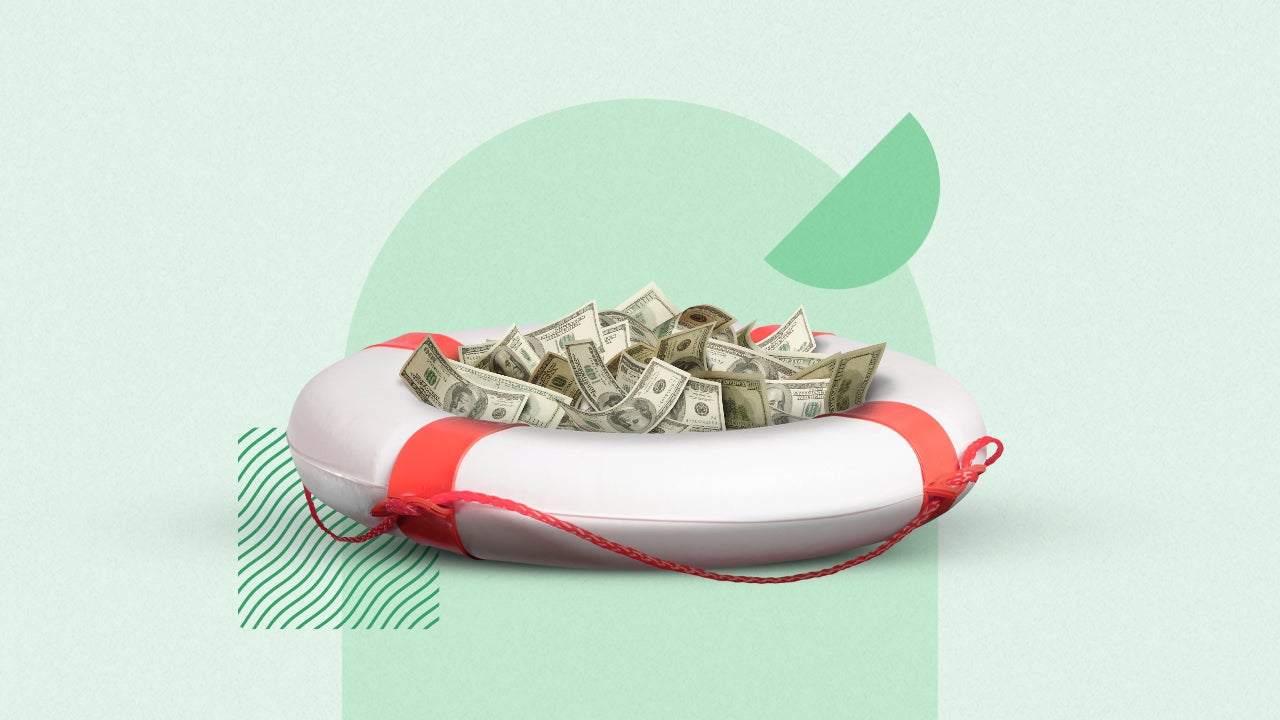PAYE vs. SAVE: Which is better?

As of March 26, the U.S. Department of Education has restored access to applications for Income-Based Repayment, Pay As You Earn and Income-Contingent Repayment plans. Applications for the SAVE plan and the retired Revised Pay As You Earn plan remain unavailable, with the Trump administration referring to these plans as “illegal.” According to Acting ED Under Secretary James Bergeron, the reopened applications have been revised to bring them into compliance with an 8th Circuit Court of Appeals injunction issued in February.
Key takeaways
- The Pay As You Earn (PAYE) and Saving on a Valuable Education (SAVE) Plan are two types of income-driven repayment (IDR) plans.
- Enrollment in the SAVE Plan is currently on pause amid legal action and could potentially be discontinued.
- The PAYE plan offers a typical repayment term of 20 years, while SAVE plans are 20 years for undergraduate loans and 25 years for graduate loans.
If you’re struggling to make federal student loan payments, an income-driven repayment (IDR) plan like Pay As You Earn (PAYE) or Saving on a Valuable Education (SAVE) Plan may be able to help. However, the SAVE Plan’s existence is under threat due to legal action.
PAYE and SAVE plans are repayment plans for federal student loans that set payments at 10 percent of your discretionary income. But because each plan defines “discretionary income” differently, your payment will differ with each plan. After 20 or 25 years of payments, your remaining balance is forgiven.
SAVE is the newest of the income-driven repayment plans available to federal student loan borrowers, but it’s currently on hold as a result of a federal court injunction. New applications are not being processed and its future may be impacted by further legal action and rulings. PAYE, which was recently reopened to new enrollees by the Department of Education, offers another option to make student loan repayment more manageable.
PAYE vs. SAVE: Key differences
| PAYE | SAVE | |
|---|---|---|
|
Eligible loans |
Direct subsidized and unsubsidized Loans; Direct PLUS in student’s name, Direct Consolidation Loans (loans made to parents are ineligible), FFEL, FFEL Plus, FFEL Consolidation and Perkins Loans if consolidated (loans made to parents are ineligible) |
Direct subsidized and unsubsidized Loans; Direct PLUS in student’s name, Direct Consolidation Loans (loans made to parents are ineligible), FFEL, FFEL Plus, FFEL Consolidation and Perkins Loans if consolidated (loans made to parents are ineligible) |
|
Repayment term |
20 years |
20 years for undergraduate loans, 25 years for graduate loans |
|
Qualification |
May have to prove financial hardship |
All borrowers with qualifying federal education loans |
|
Payment |
10% of discretionary income; no more than payments for standard 10-year repayment plan |
10% of discretionary income; no cap |
|
Interest subsidy |
Government pays surplus interest charges on subsidized loans for three years |
Government pays remaining interest exceeding monthly payments |
|
Marriage penalty |
Spouse’s income is not considered if married filing separately |
Spouse’s income is not considered if married filing separately |
What is Pay As You Earn (PAYE)?
Pay As You Earn is an income-driven repayment plan. It’s been around for many years, but until December 2024 was closed to new enrollees in most cases. Now, the Education Department says it will remain open until July 1, 2027.
Payments
PAYE bases your monthly payment on 10 percent of your discretionary income. For PAYE plans, discretionary income is defined as the difference between your income and 150 percent of your state’s poverty guideline for your family’s size. If you’re married but file separate tax returns, your spouse’s income will not be included in the calculations.
However, if your payment would exceed what you’d pay under a 10-year Standard Repayment Plan, you will not qualify for PAYE.
With PAYE, your monthly payments might be too small to cover the interest your loan accrues monthly. This is known as negative amortization. However, with the PAYE program, surplus interest charges on subsidized loans are not capitalized, which means those interest charges are not added to your loan’s principal balance.
Instead, the federal government covers those interest payments for the first three years of your loan. However, if you leave the plan, some interest may be capitalized and added to your principal balance.
After 20 years of payments, your student loan balance will typically be eligible for forgiveness.
Eligibility
To qualify, you must be a new borrower (having no outstanding loan balance before Oct. 1, 2007), and your loans must have been disbursed on or after Oct. 1, 2011.
Ineligible loans include Direct PLUS Loans made to parents, Direct Consolidation Loans that repaid PLUS loans made to parents, FFEL Program Loans (some types can become eligible if consolidated), and Federal Perkins Loans (can become eligible if consolidated), as well as any loan that is currently in default.
What is Saving on a Valuable Education (SAVE) Plan?
Formerly known as the Revised Pay As You Earn plan, the Saving on a Valuable Education (SAVE) Plan is also an income-driven repayment plan that limits the size of your federal student loan payments.
While it is still possible to apply for the SAVE program, its future is uncertain following a court injunction preventing the U.S. Department of Education from implementing parts of the program. New applications are not being processed, so if you apply for SAVE, you will continue making payments under your old plan until that changes. Those currently enrolled in SAVE are in general forbearance until litigation surrounding the program is resolved.
In addition to the legal challenges facing the SAVE program, the Trump administration has indicated it will likely terminate the SAVE plan and may seek to end other forgiveness plans.
Payments
Like PAYE, SAVE sets your student loan payment to 10 percent of your discretionary income. However, SAVE defines your discretionary income differently, as the difference between your income and 225 percent of your state’s poverty guideline for your family’s size. That means that less of your income is considered “discretionary,” meaning a smaller payment size for low-income borrowers.
However, under SAVE, your payment can exceed what it would be under the Standard Repayment Plan. If you make an above-average income, make sure to run the numbers for both plans to see which offers the lower monthly payment.
One unique feature of the SAVE Plan is its approach to monthly interest. When you make your full monthly interest payment, the government will automatically cover any extra unpaid monthly interest, so you don’t get penalized for unpaid interest.
Borrowers formerly under the REPAYE Plan are automatically enrolled for the new SAVE Plan benefits. However, spousal income is only included if you file taxes together. If you are married but file taxes separately, the SAVE Plan does not include spousal income when calculating your payments.
Undergraduate loan balances are eligible for forgiveness after 20 years of payments and graduate loan balances after 25.
Eligibility
The same loan types are eligible for both programs. However, unlike PAYE, SAVE does not require you to be a new borrower.
Can you switch from SAVE to PAYE?
You can change repayment plans for federal student loans and switch between any of the plans. Student loan expert Mark Kantrowitz suggests contacting your loan servicer if you want to change repayment plans.
However, keep in mind that you will need to disclose your income when you change plans. This could increase your monthly payment if you make more now than when you originally applied for the loan. And switching from SAVE to PAYE in 2025 means giving up the general forbearance SAVE plan enrollees currently enjoy. That might make sense for you if you want to work toward Public Service Loan Forgiveness or can afford to make payments and chip away at your balance, but it’s a serious consideration.
Crunch the numbers with a loan calculator or talk to your loan servicer about your plan to switch programs. It can explain how your monthly payment may change.
Alternatives to PAYE and SAVE
The Department of Education offers four income-driven repayment plans. Depending on your income, family size and loan type, a different plan may be a better option for you. Additional options include:
- Income-Based Repayment (IBR) Plan
- Income-Contingent Repayment (ICR) Plan
The official Federal Student Aid website offers a loan simulator to calculate your estimated monthly payment for each repayment plan. Thankfully, you only need to submit one application to be considered for all IDR plans.
If you don’t think an income-driven repayment plan is your best option, you can also lower your student loan payments by refinancing your loans with a private lender to get a lower interest rate. That might help you save money and potentially help you pay off your debt sooner, but it means giving up federal student loan protections.
Bottom line: Which is better?
While both SAVE and PAYE were designed to offer relief for borrowers through income-driven repayment plans, current events may be the most significant factor in determining which of these programs makes more sense to pursue.
SAVE’s future is uncertain amid legal threats and a new presidential administration that has indicated its intentions to eliminate the program. As a result, student loan borrowers seeking an income-driven repayment option may want to focus PAYE or other options. Similarly, borrowers already enrolled in SAVE do not need to rush to change plans immediately, but may want to begin examining alternative options as well.






